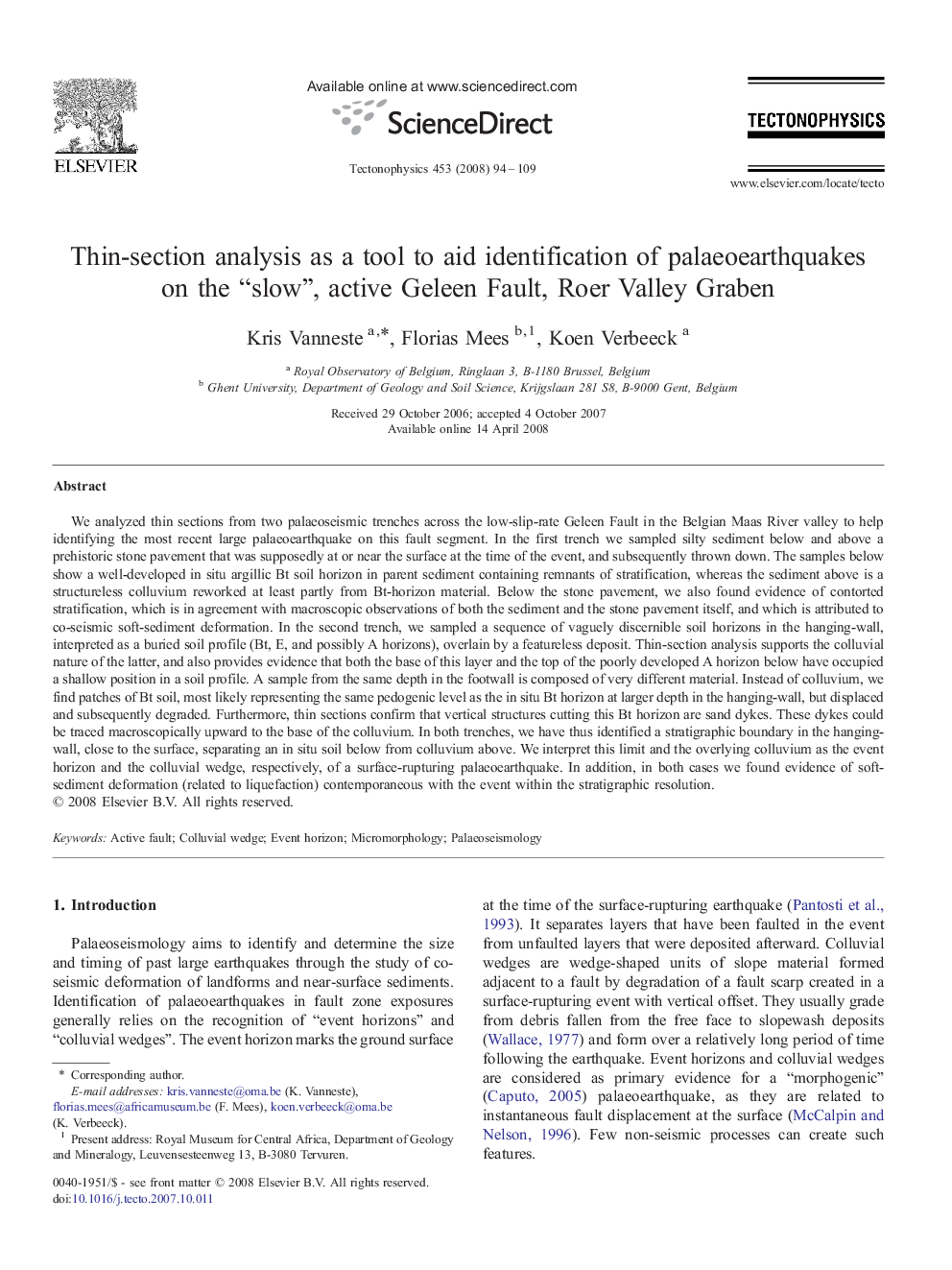| کد مقاله | کد نشریه | سال انتشار | مقاله انگلیسی | نسخه تمام متن |
|---|---|---|---|---|
| 4694533 | 1636914 | 2008 | 16 صفحه PDF | دانلود رایگان |
عنوان انگلیسی مقاله ISI
Thin-section analysis as a tool to aid identification of palaeoearthquakes on the “slow”, active Geleen Fault, Roer Valley Graben
دانلود مقاله + سفارش ترجمه
دانلود مقاله ISI انگلیسی
رایگان برای ایرانیان
کلمات کلیدی
موضوعات مرتبط
مهندسی و علوم پایه
علوم زمین و سیارات
فرآیندهای سطح زمین
پیش نمایش صفحه اول مقاله

چکیده انگلیسی
We analyzed thin sections from two palaeoseismic trenches across the low-slip-rate Geleen Fault in the Belgian Maas River valley to help identifying the most recent large palaeoearthquake on this fault segment. In the first trench we sampled silty sediment below and above a prehistoric stone pavement that was supposedly at or near the surface at the time of the event, and subsequently thrown down. The samples below show a well-developed in situ argillic Bt soil horizon in parent sediment containing remnants of stratification, whereas the sediment above is a structureless colluvium reworked at least partly from Bt-horizon material. Below the stone pavement, we also found evidence of contorted stratification, which is in agreement with macroscopic observations of both the sediment and the stone pavement itself, and which is attributed to co-seismic soft-sediment deformation. In the second trench, we sampled a sequence of vaguely discernible soil horizons in the hanging-wall, interpreted as a buried soil profile (Bt, E, and possibly A horizons), overlain by a featureless deposit. Thin-section analysis supports the colluvial nature of the latter, and also provides evidence that both the base of this layer and the top of the poorly developed A horizon below have occupied a shallow position in a soil profile. A sample from the same depth in the footwall is composed of very different material. Instead of colluvium, we find patches of Bt soil, most likely representing the same pedogenic level as the in situ Bt horizon at larger depth in the hanging-wall, but displaced and subsequently degraded. Furthermore, thin sections confirm that vertical structures cutting this Bt horizon are sand dykes. These dykes could be traced macroscopically upward to the base of the colluvium. In both trenches, we have thus identified a stratigraphic boundary in the hanging-wall, close to the surface, separating an in situ soil below from colluvium above. We interpret this limit and the overlying colluvium as the event horizon and the colluvial wedge, respectively, of a surface-rupturing palaeoearthquake. In addition, in both cases we found evidence of soft-sediment deformation (related to liquefaction) contemporaneous with the event within the stratigraphic resolution.
ناشر
Database: Elsevier - ScienceDirect (ساینس دایرکت)
Journal: Tectonophysics - Volume 453, Issues 1â4, 16 June 2008, Pages 94-109
Journal: Tectonophysics - Volume 453, Issues 1â4, 16 June 2008, Pages 94-109
نویسندگان
Kris Vanneste, Florias Mees, Koen Verbeeck,